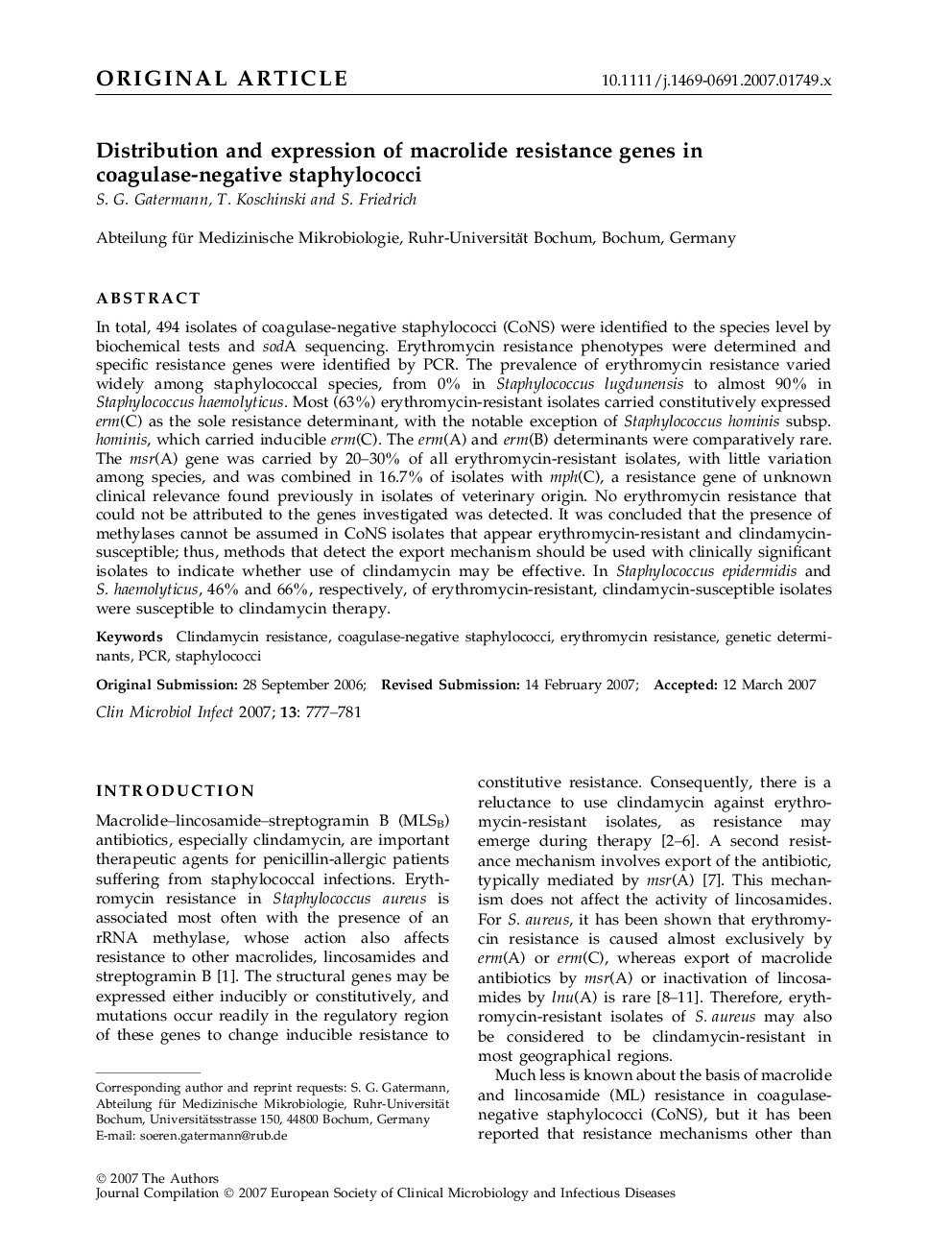| Article ID | Journal | Published Year | Pages | File Type |
|---|---|---|---|---|
| 3398763 | Clinical Microbiology and Infection | 2007 | 5 Pages |
ABSTRACTIn total, 494 isolates of coagulase-negative staphylococci (CoNS) were identified to the species level by biochemical tests and sodA sequencing. Erythromycin resistance phenotypes were determined and specific resistance genes were identified by PCR. The prevalence of erythromycin resistance varied widely among staphylococcal species, from 0% in Staphylococcus lugdunensis to almost 90% in Staphylococcus haemolyticus. Most (63%) erythromycin-resistant isolates carried constitutively expressed erm(C) as the sole resistance determinant, with the notable exception of Staphylococcus hominis subsp. hominis, which carried inducible erm(C). The erm(A) and erm(B) determinants were comparatively rare. The msr(A) gene was carried by 20–30% of all erythromycin-resistant isolates, with little variation among species, and was combined in 16.7% of isolates with mph(C), a resistance gene of unknown clinical relevance found previously in isolates of veterinary origin. No erythromycin resistance that could not be attributed to the genes investigated was detected. It was concluded that the presence of methylases cannot be assumed in CoNS isolates that appear erythromycin-resistant and clindamycin-susceptible; thus, methods that detect the export mechanism should be used with clinically significant isolates to indicate whether use of clindamycin may be effective. In Staphylococcus epidermidis and S. haemolyticus, 46% and 66%, respectively, of erythromycin-resistant, clindamycin-susceptible isolates were susceptible to clindamycin therapy.
